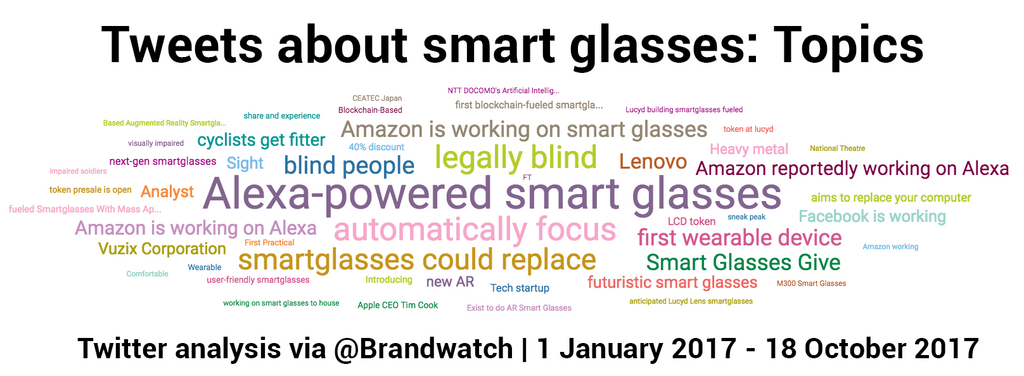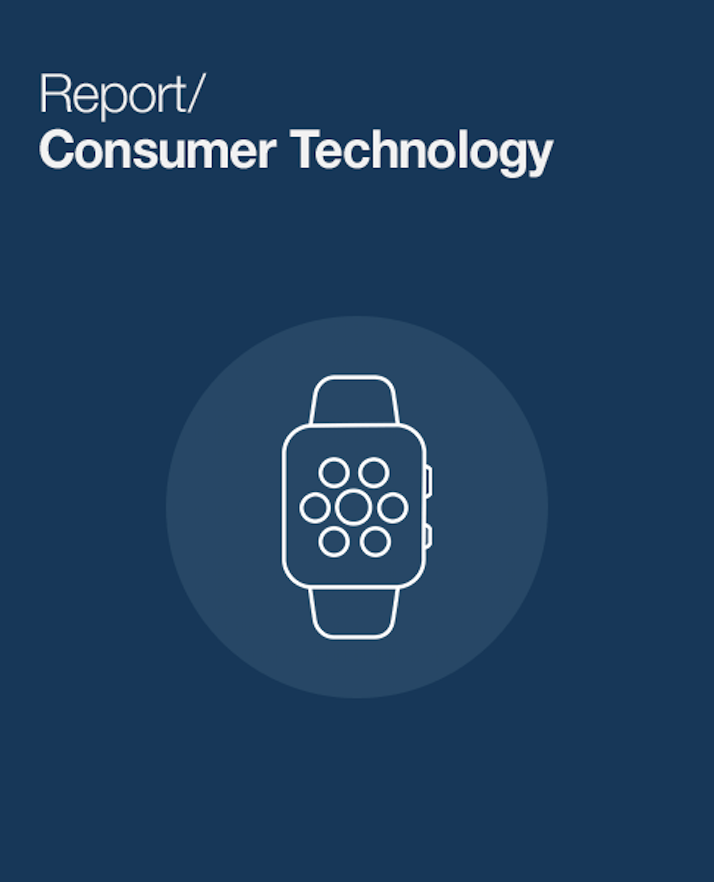The 20 Most Liked Posts on Instagram
By Gemma JoyceJul 19
Join us and boost your social media potential with our data-led event
Published October 20th 2017
Smart glasses, we are told, are the future.
They’re going to help us remember stuff. They’re going to translate things before our eyes. They’re going to read temperatures, direct us and tell us the news. We’re going to see virtual objects in the real world, and they’re going to help us.
According to the Chief Scientist of Oculus Research, they could replace our smartphones by 2022.
But smart glasses have a troubled past – the failings of Google Glass have been well documented, and there are no shortage of concerns surrounding how the glasses of the future might look and act. Our vision, after all, is precious, and mass adoption of smart glasses ought to be treated with due hesitation.
At Brandwatch React we like to keep an eye on the latest trends and how people are reacting to them, so we were keen to take a look at smart glasses and what’s being said about them.
We gathered thousands of tweeted mentions of “smart glasses” or #smartglasses between January 1st and October 18th 2017 to identify the main themes of conversation. What are people excited about or concerned about? Which brands are leading the way in terms of public perception of smart glasses? We found out.
Using Brandwatch Analytics, we used the topic cloud component to identify recurring themes within the conversation that might warrant further investigation. We noticed that accessibility, changes to our current physical technology and brands were creating major waves in the smart glasses conversation.

Is it nearly time to throw out your monitor? It seems so.
A significant part of the conversation was about how smart glasses could “replace” things. Your computer, your phone, maybe even your desk (who needs one when everything’s virtual?)
Check out this video that could represent the future of work.
Technology #startup aims to replace your computer with #smartglasses.
[@MikeQuindazzi @metaglasses]#AugmentedReality #VR #IoT #AR #tech pic.twitter.com/xYYSRWlTCu
— Michael Fisher (@Fisher85M) October 12, 2017
Of course, it’s all still a little pixelated and basic, but there’s no shortage of money being thrown at smart glasses.
With plenty of organizations working on smart glasses, there’s huge competition to get the first pair of smartglasses to go mainstream.
Facebook is reportedly investing big bucks in the technology (it bought Oculus who are apparently working on smart glasses as well as VR headwear). Lenovo are also making waves, featuring in our topic cloud above.
Amazon have made the biggest impact this year, though, as reports circulated that the company is working on Alexa powered smart glasses.

It’s worth noting the prominence of smaller players, too. Lesser known Daqri, Lucyd and Vuzix were also among the top mentioned Twitter accounts.
The race to dominate the smart glasses market it is well and truly on.
Smart glasses can be used for all sorts of different things – for construction, education, navigation etc. Something that jumps out massively in the smart glasses conversation is their ability to help the legally blind.
Electronic smart glasses help the legally blind see. https://t.co/WD6U7DQdrs
— CNBC (@CNBC) September 20, 2017
Not only can smart glasses help improve sight, they can also help blind people navigate the world.
For example, cameras mounted on smart glasses can be accessed by a supporter to see what a blind person is experiencing. They can then help them by reading items from a menu or explaining how to operate a vending machine.
In fifteen years, smart glasses might be as ubiquitous as the smartphone is today. But just like all things when they’re first introduced (similar to delivery drones and self-driving cars), there are always concerns. With smart glasses the potential hazards are obvious – added visuals could impact a person’s ability to see clearly when they need to (while they’re driving or cycling, for example). Meanwhile, the public must also be assured that they won’t suffer adverse affects on the head or the eyes by using digital glasses.
Honestly, though, concerns about the safety of smart glasses were pretty hard to come across in the data. Sweeping through the mentions we saw more people talking about how they look goofy than that they were dangerous.
Amazon is developing a wearable Alexa smart glasses device. The first question you can ask Alexa is, "Why do I look like a dork?"
— John DeBella (@JDeBella) September 25, 2017
In fact, it seems like in some fields like technicians being remotely assisted they could make working much safer, giving them expert advice in their ears, visual cues to help them understand what they’re working with and two hands to work on the job.
Maybe once we all get over how weird smart glasses can look we’ll all be sitting at work watching cartoons and typing inanely without anyone else being able to see what we’re doing.
Are you a journalist looking to cover our data? Drop us an email at [email protected] for more information or if you have a request.
Offering up analysis and data on everything from the events of the day to the latest consumer trends. Subscribe to keep your finger on the world’s pulse.

Existing customer?Log in to access your existing Falcon products and data via the login menu on the top right of the page.New customer?You'll find the former Falcon products under 'Social Media Management' if you go to 'Our Suite' in the navigation.
Brandwatch acquired Paladin in March 2022. It's now called Influence, which is part of Brandwatch's Social Media Management solution.Want to access your Paladin account?Use the login menu at the top right corner.